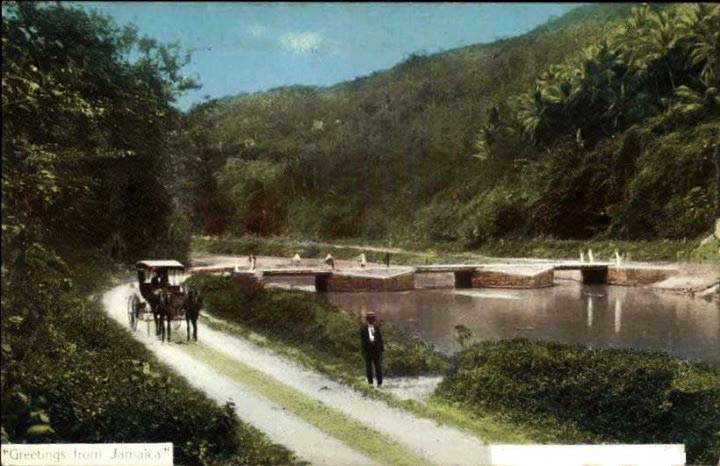St Catherine: Jamaica’s Most “Historical” Parish?
St Catherine is one of the fastest growing parishes in Jamaica.
It is virtually flat, except for Hellshire Hills near the coast. Agriculture remains the main source of employment: as bananas, coconuts, pineapple, citrus, pumpkins, peppers, coffee callaloo and sugar cane.
The Salt Ponds District is noted for fish.
The capital – Spanish Town was used by the English from 1655 as Jamaica’s capital until 1872. Spanish Town is the site of an early cast-iron bridge built in 1801.
The more famous FLAT BRIDGE was built some time after 1724, and is believed to be haunted by many. When it was being constructed, 16 plantations sent slaves to work on the River Road and many of them lost their lives. A road was cut through the GORGE in 1770, one of the first to be built in Jamaica.
SLIGOVILLE is the first ‘free village’ established in 1835. The PINNACLE was home of the first Rastafarian, Leonard Howell. The settlement was regularly raided in the 1950s because according to reports, governments were “alarmed by misunderstood Rastafarians”.
In BOG WALK, vendors line the roads selling fresh fruit to passing traffic, being on the main route from Kingston to Ocho Rios.
“PUM PUM” ROCK: a natural rock formation stands at over 20ft high. It is supposed to look like a “giant vagina”. ST CLAIR CAVE has one of the most notable bat roosts in the Caribbean
Well, we know some Jamaicans who were born in the parish: singer and actress Grace Jones, sprinter Asafa Powell, former International West Indies Cricketer Jermaine Lawson, current Prime Minister – Andrew Holness; gospel reggae singer Chevelle Franklyn, actor and model Kevin Navayne and singer Chronixx.

By Neo Makeba
Download The Jamaican Blogs™ App for your Android device: HERE
Remember to share this article on Facebook and other Social Media Platforms. To submit your own articles or to advertise with us please send us an EMAIL at: [email protected]

